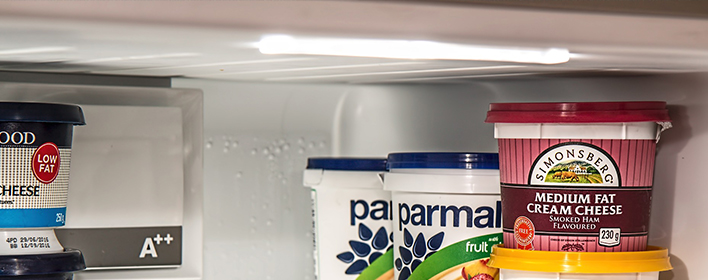
Categories Home Cleaning
How to clean and organize your fridge
Clean and Organize The Fridge
We depend on our fridge to safely store all of our perishable foods until we are ready to use them. Unfortunately the fridge takes a lot of abuse. We stuff it full. We forget about leftovers. We leave spills until they have crystalized. Then we complain when there is even the slightest unpleasant odor. Find out all the steps you need to know to clean your fridge.
 First Step – Clean Out The Fridge
First Step – Clean Out The Fridge
- Temporarily crank up the coolness control, since the door will be open longer than usual. Make note of the original setting.
- Take all food and condiments out of the fridge.
- Throw away food that has gone bad, expired, grown fuzz or that you no longer use.
- Remove shelves and crisper drawers and scrub them thoroughly in the sink.
- Add a half cup of baking soda to a bucket of hot water to make an odor-free natural cleaner that is perfectly safe to use around food. (You definitely don’t want to use harsh chemical cleaners for this).
- Dampen a cloth with the baking soda solution and wipe clean all surfaces inside the fridge.
- Clean non removable storage areas such as the butter and egg compartments.
- Rinse the fridge again with clean water and a clean rag to remove the baking soda solution.
- Wipe down jars of food and other sticky surfaces.
- Open a fresh box of baking soda to absorb future odors
Second Step – Organize The Fridge
- Keep like items together.
- Open only one bottle of each condiment at a time. Try to limit them to the door, but if there are too many, contain them by category using a clear plastic bin.
- Reposition shelves, if possible, to accommodate taller groceries.
- Put taller items in back (where you can see them).
- If your fridge is short on crisper drawers, clear plastic stackable containers are perfect for grouping smaller similar items together such as cheeses or lunch meat.
- Don’t overstock.
- Use drawers as intended by the manufacturer, since they are climate controlled to extend the shelf life of the foods they are meant to contain.
- Use stackable clear square containers (a more efficient use of space than round). To ave even more space, use the smallest container possible to store leftovers.
- Use one crisper drawer for produce requiring the highest humidity only (90 to 100 percent) such as beans, berries, broccoli, celery, cucumbers and leafy green vegetables.
- Use the other produce drawer creatively.
- Kids Snacks – pudding, yogurt, snack-size of baby carrots and precut celery sticks (down low where kids can reach them).
- Drinks – bottled water, juice, beer or soda.
- Naughty foods (out of sight, out of mind?).
- Reset the temperature control to its original setting.
